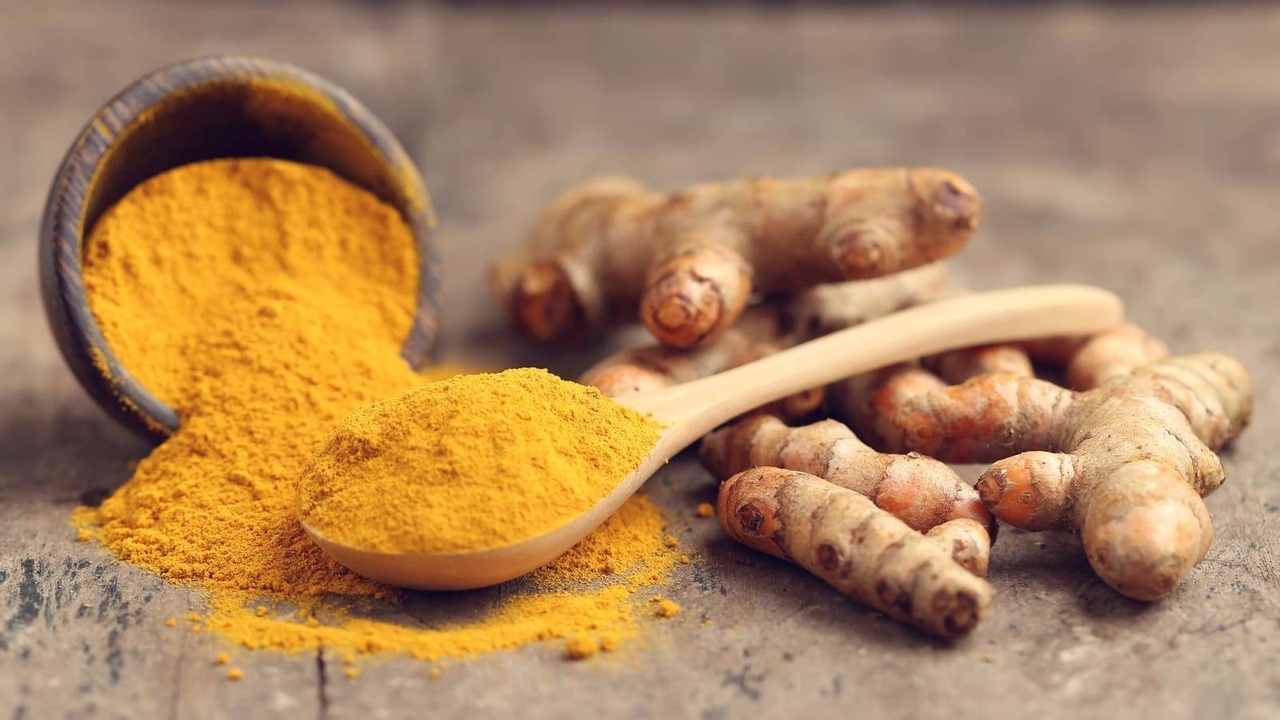What's the Deal With Turmeric
Apr 15, 2021
Ah turmeric, you cannot move without seeing it popping up somewhere. Get on to instagram and you will see everything from turmeric pancakes to turmeric porridge, and one of the biggest trends of the moment, turmeric latte’s (rather than than a charcoal one - yes they are a thing). Its fair to say that it has become a bit of a fad item. Its a culinary spice so using it in food isnt exactly weird, but some of the things it has made its way into has made the fad flag fly a little.
Does this mean that the claims around it are nonsense. Well, as a Herbalist I am very familiar with the traditional application of this spice. And as a nutritionist and phytochemical nerd, theres a lot going on to make this an ingredient of interest.
Curcuminoids
The group of compounds that are responsible for much of turmeric’s activity is the colour pigments called curcuminoids. These are responsible for the vivid orange colour of turmeric. The stuff that stains anything it comes into contact with.
The first of the benefits of curcuminoids, and the activity most widely associated with turmeric in general, is an anti-inflammatory effect. The effect observed here is similar to a class of anti-inflammatory drugs known as COX-2 inhibitors, that work by inhibiting the activity of cyclo-oxygenase (COX). Wait. What. Cyclo-oxygenases are enzymes that instigates and enhances inflammation. Anyone that has read my work on fatty acids will have heard me talk about prostaglandins. These are metabolic end products from fatty acids such as omega 3 and 6. They are communication compounds that regulate the inflammatory response. Some switch it on, some switch it off. There is a prostaglandin known as a series 2 prostaglandin that switches on and exacerbates the inflammatory response. This prostaglandin is formed from the conversion of a fatty acid called arachidonic acid, which can be found in animal derived saturated fats, and from omega 6 fatty acids (just to note, its not necessarily a bad guy as a big chunk of your brain is composed of it). Cyclo-oxygenase 2 is the enzyme responsible for the early stage conversion of arachidonic acid into the pro-inflammatory prostanoids, thromboxanes, and series 2 prostaglandins. Blocking the activity of this enzyme means a reduction in the substances that switch on and exacerbate inflammation. Curcuminoids have been shown to do just that. Block the activity of COX-2.
Curcuminoids have also been shown to offer cardioprotective benefits. This mainly comes in the form of lowering triglycerides and increasing HDL. Triglycerides are basically a form of storage energy that is being carried to our adipose tissue for storage via the circulation. I have written about this extensively, but basically if we take in more carbohydrates than we can adequately use as energy in the immediate time frame this excess blood glucose goes to the liver and gets converted into trigylcerides that can be stored in fat cells for later. These triglycerides get shipped to the fat cells through our circulatory system, and are susceptible to oxidation. This oxidation can lead to damage to the endothelium - the inner skin that lines the inner surface of blood vessels, setting up the cascade of events that lead to plaque formation and ultimately heart disease. Lowering levels of triglycerides reduces this risk. A raised HDL has long been associate with reduced risk of cardiovascular disease, so these combined effects from curcuminoids offer some powerful potential protection.
The final area where curcuminoids are gathering interest is in the context of cancer. I always get the eeby jeebies when talking about diet, nutrition, and cancer a it is such an emotive area and also there are so many variables that can influence instigation and development of cancer, that any studies at this moment just give us a few points of interest. There are certainly dietary patterns associated with lower risk - loads of fruit and veg, nuts, seeds, oily fish, high fibre etc. But individual components become much more tricky, yet do give us some interesting areas that may spur future research. Anyway, curcuminoids are one of these very things. Laboratory studies have shown that curcuminoids have the capacity to kill cancer cells, particularly breast cancer cells effectively. This is all well and interesting, but as far as I am concerned, applying a substance to cell cultures in a laboratory really doesnt give us much useful information at all. Large cohort clinical studies are the way to go to gather any significant evidence that something may be a valid treatment. Remember, dousing a petri dish of cells is different from consuming a substance that then has to be absorbed, metabolised, distributed, and excreted. The same effects may not be observed when the substance in question is administered in this way. One area that curcuminoids may offer some protection is in the context of acting as an antimutagenic agent. This means they could have the capacity to protect genetic material from damage. Life is a terminal illness. Every single day our cells are becoming older. They divide and renew continually (different rates for different tissues), but think of it like taking a copy of a copy. If you photocopied something, then took a copy of that copy. Then a copy o that copy, etc etc each copy will lose a little bit of quality, with each version becoming a slightly reduced version of itself. Well, this is what happens to our cells. With this reduction in quality can come damage and disruption to certain genes. If this happens to happen to the genes within our gene code that regulate cell division, then cells can begin to divide uncontrollably and a tumour can begin. This damage to a gene is known as a mutation. Exposure to some types of harmful substances, metabolic or otherwise can also increase the likelihood of this. Antimutagenic substances are things that can potentially offer protection against this. Curcuminoids may benefit us in this manner.
Final note
Now here is the kicker and the thing to keep in mind when reading the many claims surrounding turmeric. As you can see, there IS scientific support for components of turmeric, most notably the curcuminoids. But most of these trials have been done using standardised doses of extracted curcuminoids and NOT the whole powdered spice. When you use the whole powder, you cannot guarantee how much of the curcuminoids are present when you use it, so to what degree is it going to be giving the benefits associated? Its not going to do any harm, and in my opinion you will probably most likely get some of the benefits to boot. If you want to get maximal benefit from it though, i would recommend opting for a high strength turmeric extract that delivers standardised measured doses of curcuminoids.




